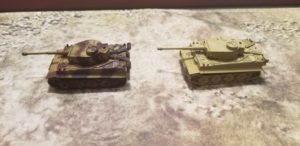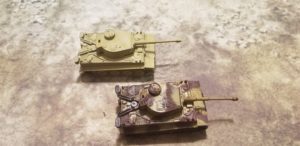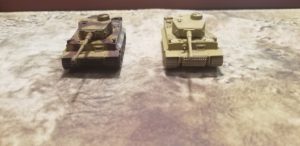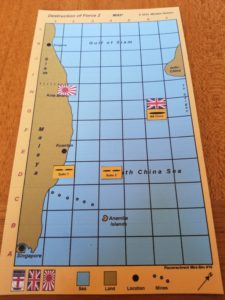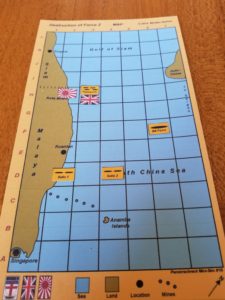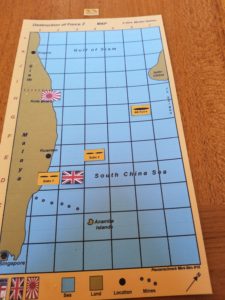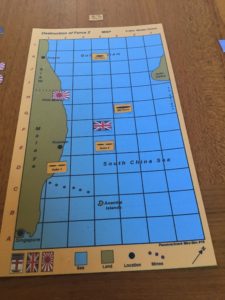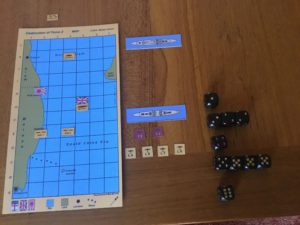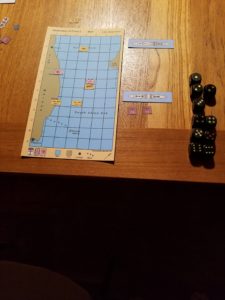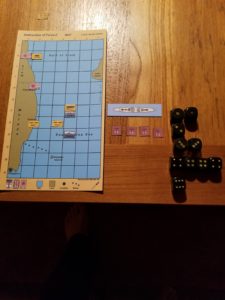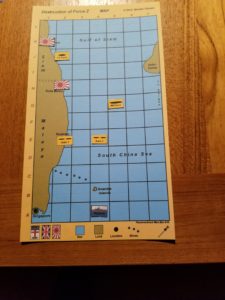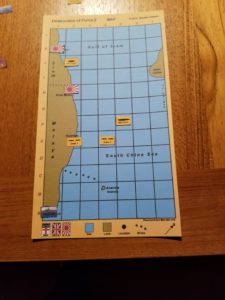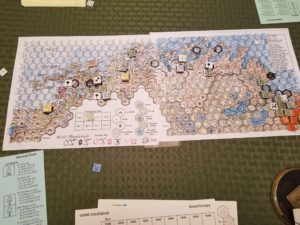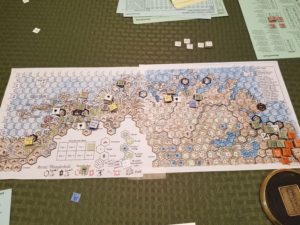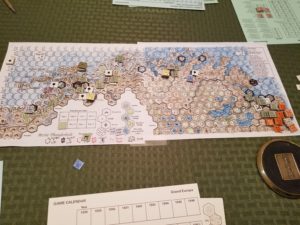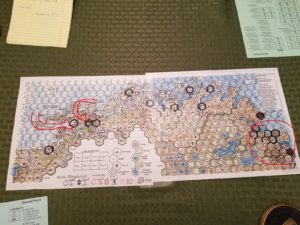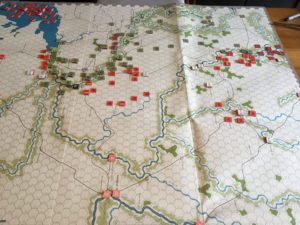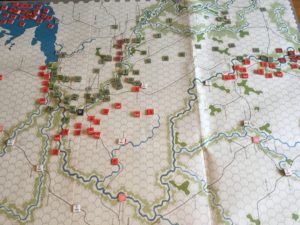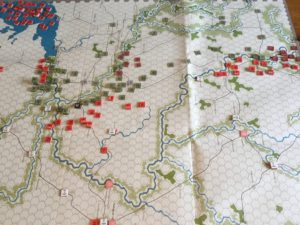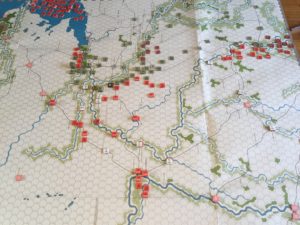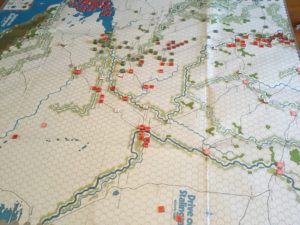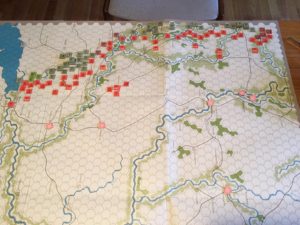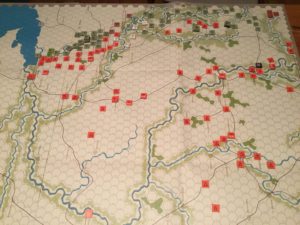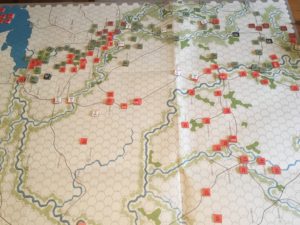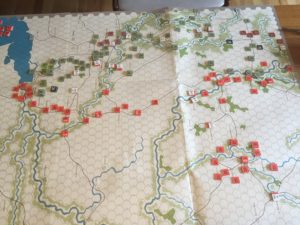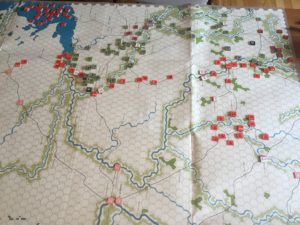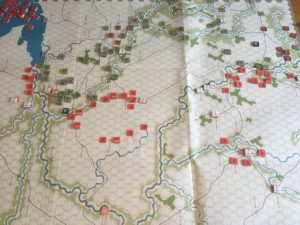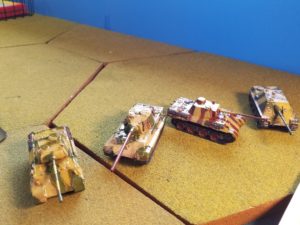Another late post. This time it’s about the Operation Jupiter game played with Tim several weeks ago.
The lead-up to this game was a comedy of errors even by our broad standards. The scenario is in The Europa Magazine (TMO) #41, entitled Arctic Thunderbolt, simulating a late 1942 invasion of Norway. The magazine contains special rules, orders of battle, and a map for the scenario. We decided to play this game during a phone conversation back in October.
This is where the fun started, because, the scenario was re-done in the boxed game Storm Over Scandinavia (SOS). I studied the scenario as presented in the game. Tim used the scenario in TEM.
We set up the SOS maps and started to play. But….nothing matched up. The OBs, locations on the map, special rules were all different. The game was out of phase, and we were losing our minds. The only thing to do was stop, settle on using the TMO rules, maps, etc, and start again in December.
As the Allied commander, I spent the next few weeks in a funk, grappling not only with the involved Europa naval rules, but also the challenges of the invasion. Things were just too depressing struggling with these “options of difficulties” and staring at a soul less black-and-white magazine, so I copied and garishly colored the map.
This was a very tough mission. Suitable landing sites were limited, weather could disrupt the landings at any time, and the invasion fleet(s) would have to run a gauntlet of German aircraft. To top things off, the Allies had a very aggressive schedule for the withdrawal of naval assets after the initial turn.
We played a couple of days before Christmas, squeezing in a session between a visit to other friends in Portland and football viewing. The SOS maps proved so cumbersome we used my little map. Even with my invasion plans completed, we managed just a single turn. Lots of naval movement, naval patrol , danger zone and mine field roles. After this session, I re-did the little map, which is shown below.
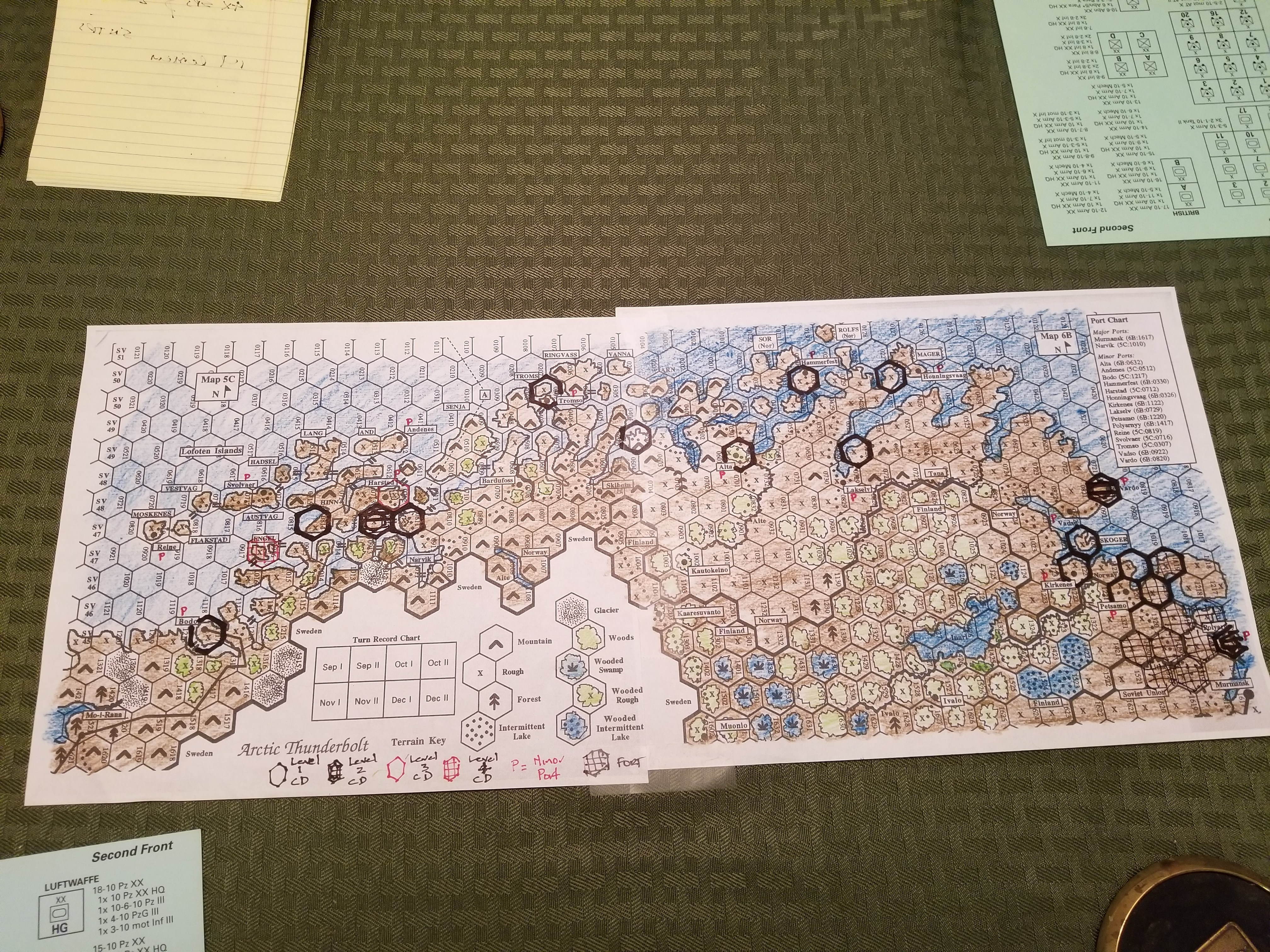
For the new game, my amphibious forces would land at Alta, Narvik, Bardofuss and Andenes.
I realize the following illustration sets a new low in media crudeness for this site, but it’s a matter of communicating effectively, and spending my time gaming, rather than focusing on developing media presentation skills.
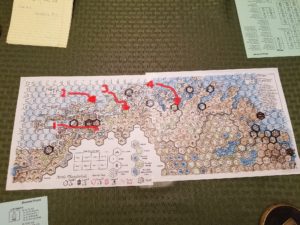
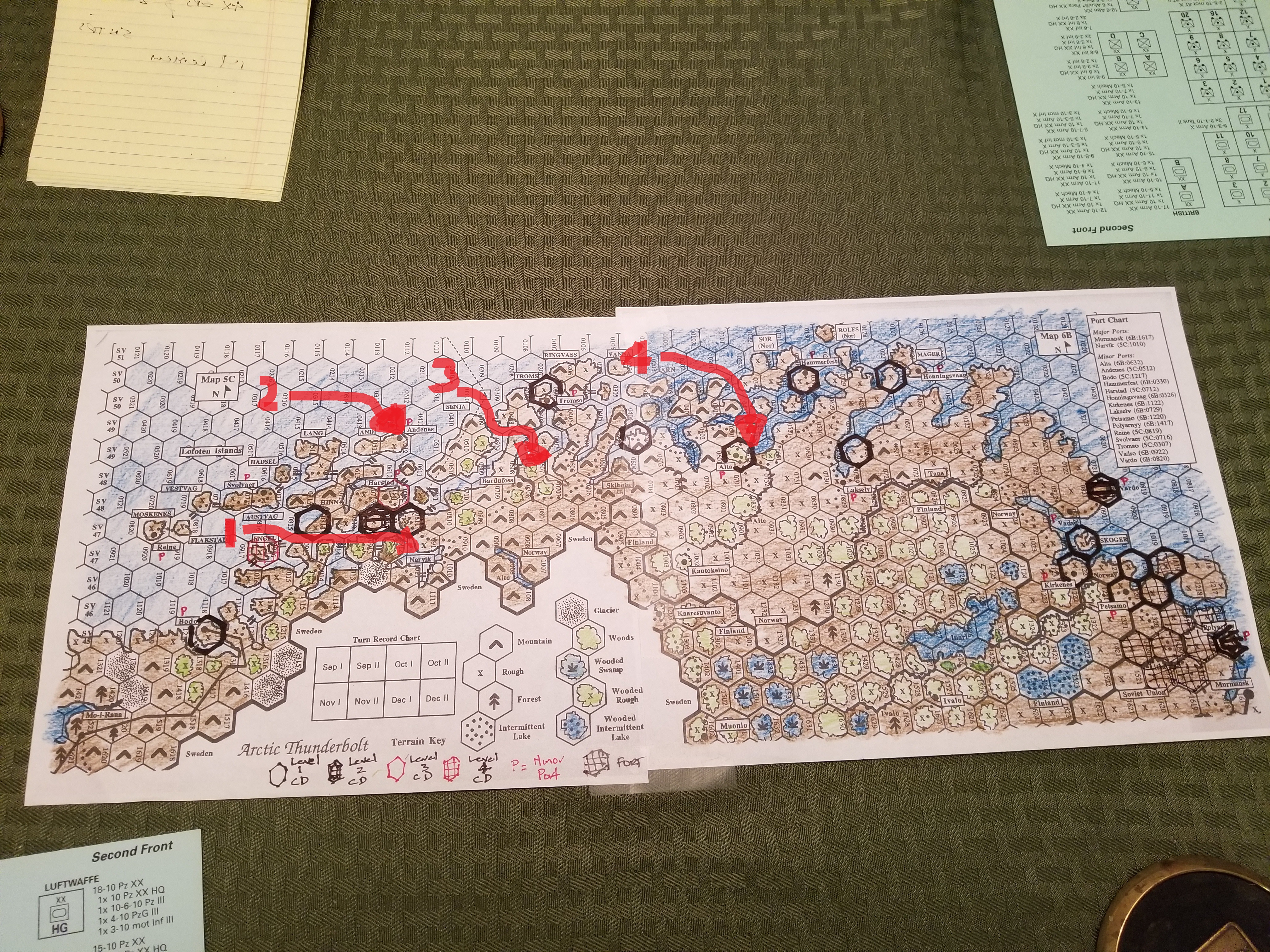
Landing # 1 – Narvik (United States): 6 Pt WNTF-1, 6 Pt WNTF-2, CG-1 (F4F & SBD), NTPs and LC for 85th Div. 1x 2-8, 1×3-8 & HQ, along with 4 SPs at Hex 0811.
Landing # 2 – Andenes (British): 4 NTPs & LC for 102 RM 3-6 & 10 Eng 2-3-8 along with 4 SPs at Hex 0512
Landing #3 – Alta (British): 16 Pt ENTF-1, 8 Pt ENTF-2, CG-1 (with Sfire, F4F & Albacore) & CG-2 (with Sfire, & Fulmer) , NTPs and LC for 46th Div. 1x 2-8, 1x 3-8 & HQ, along with 4 SPs at Hex 0532.
Landing #4 – Bardofuss (British): 8 Pt ENTF-3, NTPs & LC for 2x 3-6 RM (101,103), 2-8 Layforce along with 4 SPs at Hex 0608.
Landing #2 was scheduled for the Exploitation Phase when – it was hoped – all German air assets had been used for naval patrol or strike missions. The engineer unit build an airfield.
